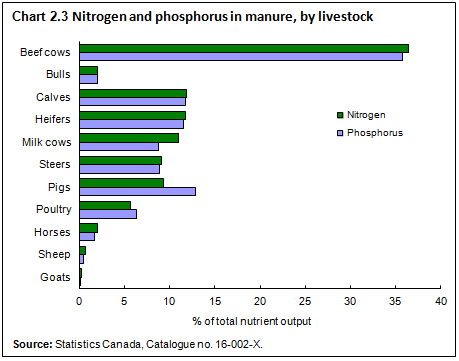Manure and its effects
Archived Content
Information identified as archived is provided for reference, research or recordkeeping purposes. It is not subject to the Government of Canada Web Standards and has not been altered or updated since it was archived. Please "contact us" to request a format other than those available.
Related information
Livestock numbers have been growing in the last couple of decades and; therefore, manure production has been rising, too. While manure is valuable as a fertilizer, it can become a source of pollution if it is mismanaged, resulting in water contamination and unwanted air emissions.
Manure contains varying amounts of organic matter, water and nutrients, but generally includes more nitrogen than it does phosphorus. Larger animals such as cattle produce more manure, and thus generate greater amounts of nutrients per animal. However, there are other differences because of livestock type. For example, pig and poultry manure contains more phosphorus than other types of manure.
In 2006, Canadian livestock manure contained 1.1 million tonnes of nitrogen, up 17% from 1981 levels, and 300,000 tonnes of phosphorus, up 21% from 1981. These increases are a result of increased livestock populations as well as variations in nutrient output by animal type.
- Date modified:

